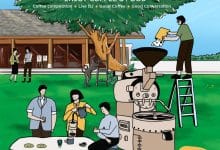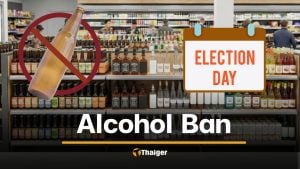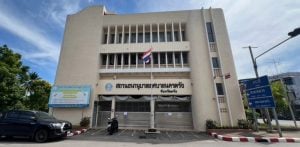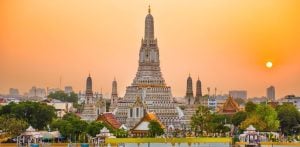Phuket inflation tops South

PHUKET: Not only is Phuket still considered the most expensive consumer province in Thailand, but its annual inflation rate remains the highest in the South – the Kingdom’s most inflated region.
Thailand’s cost of living in 2012, as measured by the Consumer Price Index (CPI), rose by 3.02% from the previous year, while overall inflation in Phuket was measured at 5.5%.
The Phuket Commerce Office, in collaboration with the Phuket provincial government and the Commerce Ministry’s Information Office and Bureau of Trade and Economic Indices, recently published the province’s Consumer Price Index (CPI-P) report for 2012.
Compared with the national CPI report, which surveys 407 items, the CPI-P monthly report for Phuket surveys 256 consumer goods and services – covering everything from food, beverages, apparel, housing and personal health-care to vehicles, transport, communications, entertainment, media, education, religion, tobacco and alcohol.
December, 2012 vs 2011
Using 2007 as a base year (100 points), the CPI national average during the last month of 2012 peaked at 116.86 points, rising 0.45 points from 116.41 points in November, 2012. This represents a month-on-month (m-o-m) increase of 0.39%, and a year-on-year (y-o-y) increase of 3.63%, while the full-year CPI average in 2012 was 3.02% higher than 2011.
The figure is in line with the MoC’s initial prediction of an annual inflation rate of between 3-3.4%.
In contrast, Phuket’s CPI-P for the final month of the year peaked at 126.3 points or 26.3% inflation since 2007 – up 0.7 percentage points from the previous month and 5.4 points from December, 2011. This equates to rises of 0.55% m-o-m and 4.4% y-o-y.
December’s y-o-y inflation of 4.5% was mainly attributed to a 4.9% increase measured in food and beverage items (f&b), which was calculated from price increases in fruits and vegetables (11.6%); out-of-home consumer foods (5.6%); meat, poultry and seafood (4.9%); in-home consumer foods (3.4%), non-alcoholic (3.1%); rice, flour and flour products (1.3%) and egg and dairy products (0.5%); meanwhile, the Phuket Commercial office reported 1.7% deflation in the food condiments category.
Non f&b items inflated y-o-y by 4.2%, calculated from a 9% jump in clothing apparel and footwear (men’s and ladies’ shirts and student badges); as well as inflation in tobacco and alcohol products (7.8%); packaging, transport and communications – including the price of petrol, public transportation and automobile expenses (6%); housing – including construction materials, labor, utilities and energy (2.4%); personal health care expenses and pharmaceuticals (1.3%); and a 0.5% jump in entertainment, reading, education and religion – a category which includes sporting goods and pet care expenses.
2012 vs 2011, OVERALL
The CPI-P average for the entire year was 124.8 points, up 5.5% from the 2011 average of 118.3 points. The inflation rate was attributed to a 7.8% increase in f&b costs, including fruits and vegetables (14.4%); in-home consumer foods (9.4%); meat, poultry and seafood (8.7%); out-of-home consumer foods (6.8%); food condiments (6%); rice, flour and flour products (4.8%) and non-alcoholic beverages (2.5%); egg and dairy products (2%).
Non f&b items inflated by 3.3%, calculated from rises in clothing apparel and footwear (6.3%); packaging, transport and communications (4.7%); housing expenses (2.4%); alcohol and tobacco (2.3%) and personal health care (1.8%).
Meanwhile the category for entertainment, reading, education and religion experienced deflation by 0.5%.
— Steven Layne
Latest Thailand News
Follow The Thaiger on Google News:


























